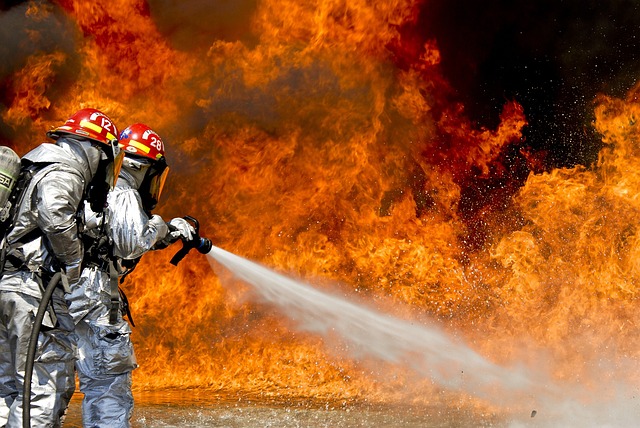The Importance Of Firestopping In Passive Fire Protection: Safeguarding Your Property

Firestopping is an essential aspect of passive fire protection that contributes significantly to building safety. Given the ever-present risk of fire hazards, it’s critical to have measures in place that prevent fire from rapidly spreading within structures.
By sealing vulnerable points, such as gaps in walls, floors, and ceilings, firestopping restricts the movement of flames and smoke, preserving the property’s integrity and the safety of its occupants.
As a part of a broader fire protection strategy, firestopping supports emergency response efforts and provides sufficient evacuation time, ultimately helping to secure lives and assets.
Overview Of Firestopping And Its Importance
Firestopping involves applying fire-resistant materials such as sealants, wraps, and barriers to block openings and joints in a property’s construction. These materials form a protective layer that contains fire, smoke, and hot gases from travelling through otherwise exposed areas.
The importance of firestopping extends beyond immediate fire containment; it also ensures that the structure’s critical escape routes, like stairways and corridors, remain accessible during an emergency.
In addition to minimising structural damage, reliable firestopping gives building occupants more time to evacuate safely and can reduce the repairs and recovery needed after an incident.
The Role Of Fire Protection In Building Safety
Passive fire protection systems, including firestopping, form the foundation of a building’s fire safety measures. Their primary role is to limit the spread of fire, heat, and smoke, suppressing these hazards within specific compartments.
This containment strategy strengthens the building’s resilience by slowing fire progression and allowing emergency services time to intervene.
The passive fire protection role also extends to safeguarding valuable equipment, documentation, and data by controlling the areas impacted by the fire.
Thus, robust firestopping and passive protection efforts extend far beyond precautionary measures, serving as critical components for shielding lives, assets, and the overall stability of a building structure.
These systems, along with proactive measures like wildfire protection systems, are essential for safeguarding properties in high-risk areas from environmental threats.
Understanding Firestopping
A thorough understanding of firestopping is essential for anyone involved in building design, construction, or maintenance. Firestopping solutions are not just about fire prevention; they are proactive measures that maintain the safety and integrity of a structure by controlling the spread of fire, smoke, and heat.
Definition And Purpose Of Firestopping
Firestopping is the process of sealing penetrations, gaps, and joints in a building’s structure to create a barrier against fire and smoke. It’s primarily aimed at compartmentalising fire within specific spaces, preventing it from moving unchecked through walls, floors, and ceilings.
By limiting the fire’s ability to spread, firestopping plays a predominant role in protecting occupants, maintaining escape routes, and safeguarding the building’s structural elements, all vital for adequate fire safety.
Common Materials And Techniques Used
Firestopping solutions employ several fire-resistant materials to create effective barriers in different building spots. Commonly used materials include fire-rated sealants, intumescent wraps (materials that expand when exposed to heat), firestop collars, and fire-resistant mortar.
Techniques for applying these materials vary based on the construction type and the location of potential fire pathways. For instance:
- Fire-rated sealants are applied to seal gaps in walls and floors.
- Intumescent wraps expand under heat to block fire spread in cavities.
- Firestop collars are installed around pipes to close off potential pathways.
- Fire-resistant mortar is used to fill large gaps and openings in structural elements.
Selecting suitable materials and techniques is pivotal to meeting safety standards and ensuring long-term protection.
The Connection Between Firestopping And Passive Fire Protection
Firestopping is a core component of passive fire protection (PFP), working alongside other PFP systems to strengthen a building’s overall fire safety strategy.
Passive fire protection focuses on suppressing fire within specific zones, reducing its potential spread and limiting the damage caused. Firestopping helps achieve this goal by reinforcing fire-rated barriers, making it an integral part of any well-planned fire protection approach.
How Firestopping Complements Passive Fire Protection Systems
Firestopping works harmoniously with other PFP measures, such as fire-resistant walls, floors, and doors. While these structural elements create physical compartments to restrict fire movement, firestopping seals the gaps, penetrations, and openings within them, ensuring the integrity of these barriers.
For instance, firestop sealants are applied to gaps around pipes and cables that pass through walls and floors. This prevents the fire from travelling through these pathways and spreading uncontrolled.
Additionally, firestopping materials, such as intumescent coatings, expand when exposed to high temperatures, effectively blocking the passage of flames and smoke.
Together, firestopping and passive fire protection systems form a cohesive network that augments building safety, resilience, and occupant security.
Benefits Of Integrating Firestopping In Building Design
Integrating firestopping during the design and construction phases ensures that a premises fire protection system is robust from the start, lowering future risks and maintenance costs.
In other words, this proactive approach reinforces the structure’s fire safety and enhances compliance with fire safety regulations from day one.
Furthermore, firestopping offers long-term benefits by sealing potential routes for fire spread, which minimises property damage and increases the building’s structural stability under fire conditions.
With firestopping in place, occupants have more time to evacuate securely, and firefighters can contain the fire more efficiently. Ultimately, incorporating firestopping solutions at the design stage supports a comprehensive, resilient approach to fire safety.
In conclusion, firestopping and passive fire protection work in conjunction to create a secure and resilient building environment. By reinforcing essential fire barriers, these systems support a building’s compliance, structural integrity, and preparedness to withstand fire emergencies.
Firestopping Regulations And Compliance
Compliance with firestopping regulations is vital for ensuring that a premise meets fire safety standards to provide compelling fire protection. Firestopping requirements are set out in building codes and safety standards, guiding contractors and property owners In London in implementing measures that minimise fire risks.
Staying up-to-date with these regulations helps ensure that both new and existing structures maintain safe, compliant environments for occupants. This section explores relevant codes and the importance of compliance for adequate fire protection.
Overview Of Relevant Codes And Standards
Building codes and fire safety standards are established to set minimum requirements for firestopping and passive fire protection.
Key codes, such as the UK’s Building Regulations Approved Document B, specify guidelines for fire compartmentation, including firestopping in walls, floors, and service penetrations.
Adherence to these regulations ensures that fire-resistant barriers are installed and maintained correctly, limiting the spread of fire, smoke, and toxic gases.
International standards like BS 476 and EN 1366 outline testing methods for fire resistance and firestopping materials, ensuring that only certified solutions are used in construction.
Adherence to these codes secures building occupants and safeguards property owners from potential legal liabilities.
Ensuring Compliance In New And Existing Buildings
Whether a building is newly constructed or undergoing renovation, compliance with firestopping regulations is a legal requirement. In new buildings, incorporating firestopping from the outset ensures that all necessary barriers are in place, creating a solid foundation for safety.
Regular inspections and maintenance are pivotal for compliance in existing buildings, as renovations or wear and tear may compromise firestopping effectiveness. Retrofitting firestopping solutions in older structures ensures that even the smallest openings are sealed, lessening fire spread risks.
Building owners should work closely with fire safety experts to assess compliance needs and implement necessary upgrades, ultimately ensuring the establishment remains safe, compliant, and structurally sound.
In summary, adherence to firestopping regulations is crucial for maintaining a safe and compliant building. Through regular assessments and upgrades, property owners and managers in London can be confident that their fire safety measures are up-to-date and potent in guarding both inhabitants and assets.
Best Practices For Implementing Firestopping Solutions
Implementing firestopping solutions effectively requires meticulous planning, knowledge of materials, and attention to detail. Best practices in firestopping ensure that each fire protection system component performs flawlessly under fire conditions.
You can enhance your premises’ fire resilience and occupant safety by following established guidelines and avoiding common pitfalls. This section will discuss fundamental considerations for compelling firestopping and highlight some common mistakes to avoid.
Key Considerations For Effective Firestopping
To achieve effective firestopping, it’s crucial to choose materials specifically designed for the intended application and fire rating. For instance, firestop sealants and intumescent coatings are ideal for sealing gaps and openings, while firestop collars are suitable for pipes and conduits.
Installing firestopping materials according to manufacturer instructions is paramount for maintaining fire resistance. Inspection and quality control during installation can prevent vulnerable points that might allow fire to spread.
Proper labelling and documentation of firestopping installations further support compliance and make future inspections more manageable.
Note: Firestopping is a long-term commitment, so regular maintenance and inspections are equally essential to uphold safety standards over time.
Common Mistakes To Avoid
Common mistakes in firestopping can wear away the entire fire protection system. One frequent issue is using incorrect or incompatible materials, which can fail under high heat. Inadequate installation, such as leaving gaps or improperly applying sealants, also reduces effectiveness.
Additionally, neglecting to update firestopping systems during renovations or structural changes is a common oversight that increases risk. Using untested or uncertified products can lead to serious compliance issues. It may compromise safety.
Regularly training personnel on correct installation methods and updating firestopping solutions to align with current standards are critical steps to avoid these pitfalls and ensure consistent fire protection.
In conclusion, adopting best practices and avoiding common mistakes in firestopping significantly enhances a building’s fire resilience. These best practices help create safer environments that shield both property and occupants in the long run.
Case Studies: Successful Firestopping Applications
Real-life examples of firestopping applications highlight the practical benefits and potency of these measures in diverse building types. In particular, from commercial complexes to residential structures, successful firestopping solutions not only secure lives but also reduce property damage and enhance building resilience.
In this section, you will explore case studies across different construction types and share key lessons from these implementations.
Examples Of Firestopping In Various Building Types
In high-rise commercial buildings, firestopping is crucial due to the number of occupants and multiple floors.
For example, firestop sealants were strategically installed around electrical conduits and ventilation ducts in an office complex in London. These fire-resistant barriers proved reliable in a simulated fire test, preventing smoke and heat from moving between floors.
Similarly, in a healthcare facility, firestopping materials were installed to protect critical evacuation routes, ensuring that patients and staff could evacuate safely during a fire breakout.
These examples illustrate how firestopping adapts to different building layouts, meeting each establishment’s unique fire protection needs.
Lessons Learned From Implementations
Successful firestopping implementations provide valuable insights for future projects. One lesson learned is the importance of thorough planning. It helps understand a building’s structure and potential fire hazards, enabling more compelling firestopping solutions.
For instance, pre-assessment of high-risk spots, such as service penetrations, helped contractors deploy the appropriate fire-resistant materials in vulnerable areas.
Furthermore, regular inspections were crucial for determining maintenance needs and ensuring continued compliance with fire safety regulations. Training personnel on the proper installation techniques was another critical factor in maintaining effective firestopping.
These lessons highlight the requirement for diligence and proactive planning to maximise fire safety benefits.
In conclusion, real-life firestopping applications illustrate the protective impact of these solutions across diverse construction types. By drawing insights from these successful implementations, building professionals can refine their firestopping strategies to create safer, more resilient structures.
Conclusion
This guest blog has shown that firestopping is an integral element of passive fire protection, playing a predominant role in safeguarding buildings and their occupants.
By effectively sealing openings, gaps, and joints, firestopping solutions contain fire and smoke, securing property and providing occupants with essential time to evacuate safely.
We have highlighted the vital components of firestopping, from its purpose and materials to best practices and compliance with regulations. Together, these elements form a robust fire protection strategy that can significantly enhance building resilience.
Assessing and upgrading existing firestopping measures is a proactive approach to reinforcing safety. Staying informed about firestopping solutions and adapting them to meet current regulations ensures a well-rounded approach to fire protection.
We recommend seeking professional guidance for clarification and a fire risk assessment from certified experts. For instance, CA Fire Protection, an ISO-certified company, offers expertise in passive fire protection.
They help building owners and managers across London implement reliable firestopping measures prioritizing safety and compliance. Such providers deliver tailored solutions to help you create a safer, more resilient environment.
Thank you for reading this guide on firestopping. We hope it has provided worthwhile insights and practical advice for enhancing your property’s fire protection.

